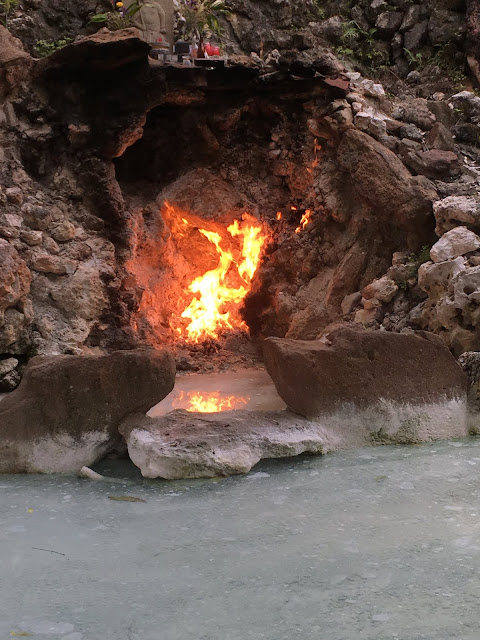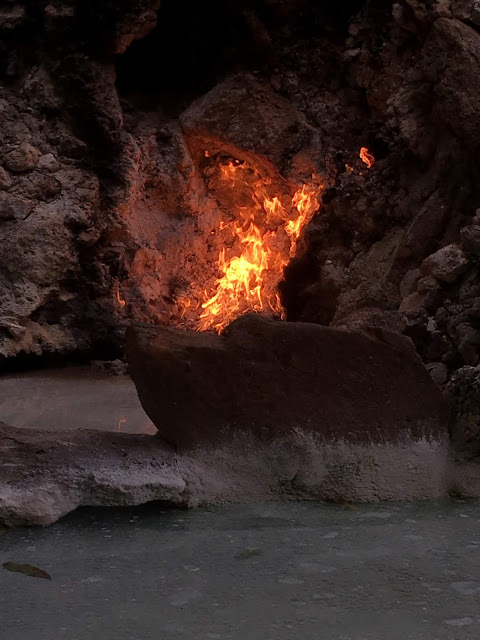Fire and Water Spring (水火同源)
Continuing our travels with other foreigners, we once again visited the Guanziling Scenic Area to see the Fire and Water Spring.
Guanziling is nestled between hills and mountain ranges. The geothermal activity in this area produces unique mud hot springs, which are the only ones of their kind in Taiwan. The temperature of these springs is around 75 degrees Celsius. They are known for their effectiveness in treating skin allergies, exhaustion, gastrointestinal problems, rheumatism, and arthritis.
Guanziling's famous hot mud hot springs are well-known, and the fire princes of Guanziling's Shangyu are significant figures in the local beliefs. Because of the hot springs, many scenes in Guanziling are associated with fire. Among them, the Fire and Water Spring is a famous and longstanding attraction where flames have been constantly emerging from the water for over 300 years.
This phenomenon was discovered in 1701 by the Zen Master of Daxian Temple. At that time, he described the fire as strong and concentrated. Even after the 1964 Baihe earthquake, the fire weakened but never disappeared. During the Japanese era, villagers carved a statue of a deity named Shuihuo for worship.
The Fire and Water Spring is listed as one of the Seven Scenes of Taiwan and the Eight Views of Tainan. It is considered a must-see destination in Guanziling. The spring water flows out from the wall gap, and when ignited, it creates a unique landscape of fire in the water. The area is also home to sausage trees, which bear peculiar fruit resembling sausages. However, these fruits are poisonous and should not be consumed!
Legends associated with the Fire and Water Spring
One legend tells the story of two dragons, a fire dragon, and a water dragon, who had a disagreement and engaged in a fight. Both dragons were ultimately defeated, with the fire dragon becoming fire and the water dragon becoming water, thus creating this unique landscape.
Another legend involves a mythical creature named Kirin. According to the legend, the cave where the fire and water emerge was Kirin's head, while his tail was laid in the Hongye Tunnel. The hot spring water is said to be his urine. Kirin enjoyed entertaining people by producing fire.
See also: Baihe Lotus Festival
What's Kirin?
The qilin (Kirin) is a mythical creature found in Chinese and other East Asian cultures. It is a type of one-horned beast within the lin mythological family. The identification of the qilin with the giraffe is supported by some of its attributes, such as its vegetarianism and calm nature. Its ability to walk on grass without disturbing it may be related to the long, thin legs of a giraffe. Additionally, the qilin is described as having antlers like a deer and scales like a dragon or fish. The association between the qilin and giraffes has had a lasting influence, as the same word is used for both the mythical animal and the giraffe in Korean and Japanese languages.
In modern depictions, qilin often have Chinese dragon-like features, including heads with thick eyelashes, manes that flow upward, beards, and fully or partially scaled bodies shaped like oxen, deer, or horses. They are always depicted with cloven hooves. Qilin are considered symbols of luck, good omens, protection, prosperity, success, and longevity in Chinese culture. They are also associated with fertility and are often depicted in decorations bringing a baby to a family.
See also: Baihe Kapok Road














0 komentarze:
Post a Comment